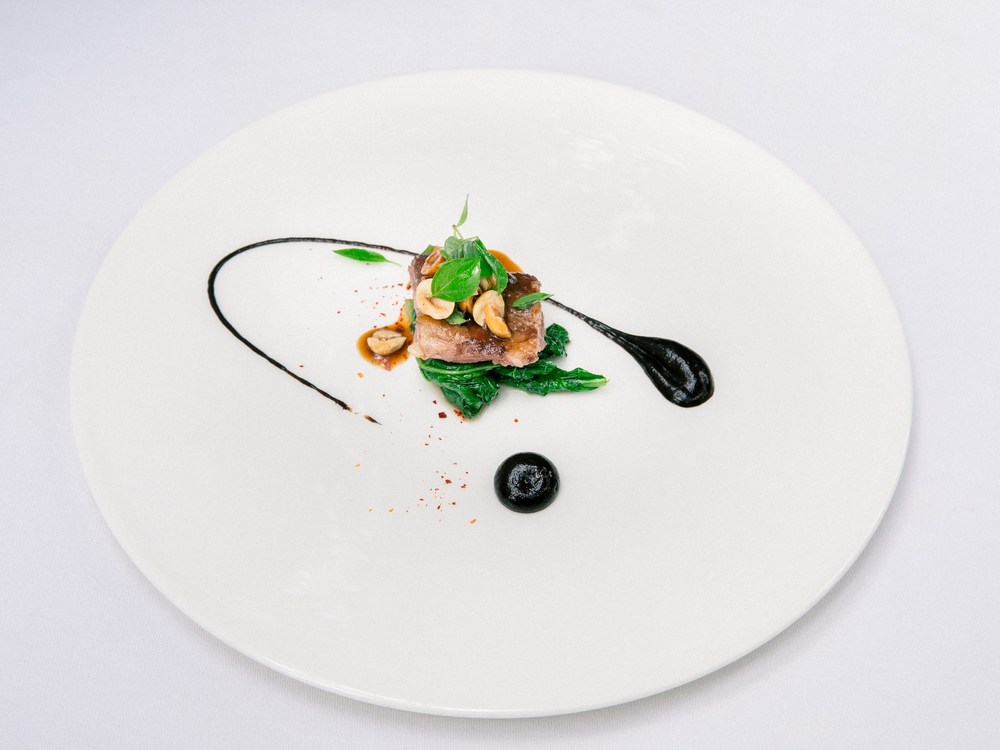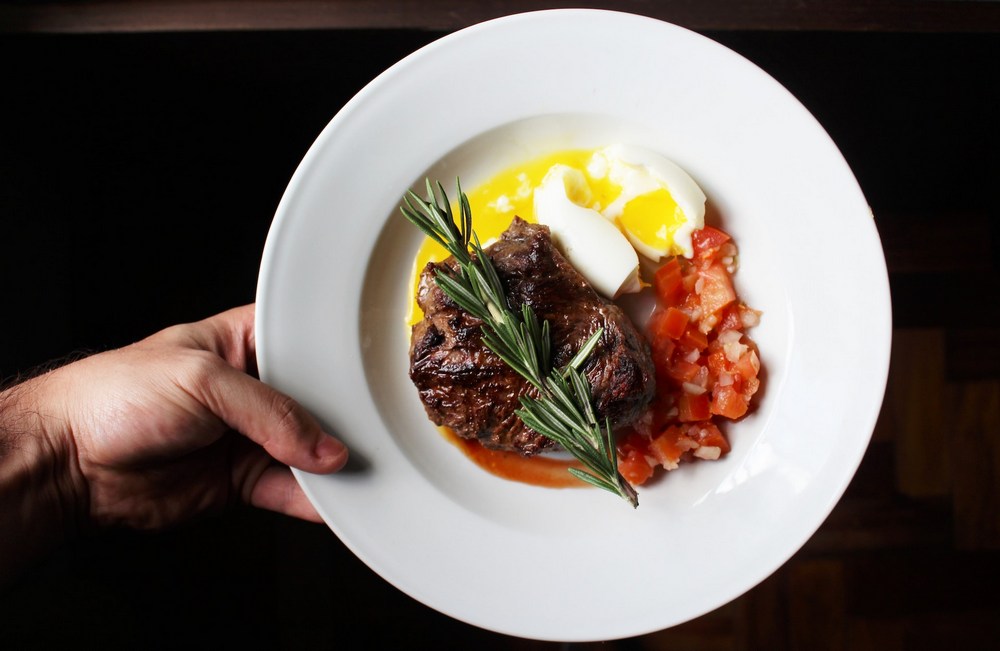Food has always played a significant role in human history, not only as a means of sustenance but also as a reflection of culture and social status. The way we cook and consume food has evolved dramatically over time, shaped by a range of factors such as migration, trade, technology, and tradition. In this article, we will explore the rich history of food and examine how dishes from around the world have become what they are today. We will delve into the origins of culinary culture, the impact of global influences, and the challenges posed by modern food production and consumption. Join us on a journey through time to discover the fascinating story of how the food we eat has transformed over centuries.
The Origins of Culinary Culture
The origins of culinary culture can be traced back to the earliest days of human history. The first humans were hunters and gatherers who subsisted on a diet of wild plants and animals. Over time, as humans learned to cultivate crops and domesticate animals, food production became more sophisticated, leading to the development of distinct culinary traditions.
In ancient civilizations such as Egypt, Greece, and Rome, food played an important role in religious and social ceremonies. The wealthy enjoyed elaborate banquets featuring exotic ingredients and elaborate dishes. In medieval Europe, food was used to symbolize power and status, with feasts serving as a way for lords and kings to demonstrate their wealth and influence.
As global trade and exploration increased, new ingredients and cooking techniques were introduced, leading to the fusion of different culinary traditions. Today, the influence of diverse cultures can be seen in the food we eat, from Indian curries to Italian pasta dishes.
Despite the changes brought about by modern technology and globalization, culinary culture remains an integral part of human society. The way we cook and consume food continues to reflect our history, values, and social dynamics, making it a fascinating subject to explore.

The Evolution of Cooking Techniques
Cooking techniques have evolved significantly over time, driven by factors such as the availability of ingredients, advancements in technology, and cultural influences. In the earliest days of cooking, fire was used to cook meat and plants, but over time, new methods such as boiling, grilling, and roasting emerged.
In ancient Greece, cooking was seen as an art form, with chefs employing intricate techniques to create visually stunning dishes. The Middle Ages saw the emergence of the spit roast, where meat was skewered on a rotating spit and cooked over an open flame. In the 18th and 19th centuries, the invention of the stove and oven revolutionized cooking, allowing for greater precision and control over heat.
Today, cooking techniques continue to evolve, with chefs experimenting with new methods such as sous-vide cooking and molecular gastronomy. In many parts of the world, traditional cooking methods are still practiced, with generations passing down recipes and techniques from one to the next.
As we look to the future, it’s likely that cooking techniques will continue to evolve, with new technologies and cultural influences shaping the way we cook and consume food.
The Influence of Trade and Migration on Food
Throughout history, trade and migration have played a significant role in shaping culinary culture. As people traveled to new lands and interacted with different cultures, they brought with them new ingredients, flavors, and cooking techniques.
The Silk Road, which spanned from China to the Mediterranean, was a major trade route for spices, teas, and other luxury goods. The spice trade in particular had a significant impact on culinary culture, as spices such as cinnamon, nutmeg, and cloves were highly prized and often used to mask the taste of spoiled food.
The Age of Exploration in the 15th and 16th centuries brought European explorers to new lands, leading to the introduction of new crops such as tomatoes, potatoes, and peppers to Europe. The transatlantic slave trade also played a role in the spread of culinary culture, with African slaves bringing with them their own culinary traditions and ingredients.
Today, the influence of trade and migration can be seen in the diversity of cuisines available around the world. In cities such as New York, London, and Sydney, it’s possible to find food from every corner of the globe, reflecting the complex and interconnected nature of modern culinary culture.
The Role of Religion and Tradition in Food
Religion and tradition have played an important role in shaping culinary culture throughout history. Many religious beliefs and practices have influenced the types of foods that people eat and how they are prepared.
In Judaism, the laws of kashrut dictate what foods can and cannot be eaten, with certain animals and their byproducts prohibited. In Hinduism, vegetarianism is often practiced as a way to respect all forms of life. In Islam, halal and haram foods are specified, with pork and alcohol being prohibited.
Tradition also plays a significant role in culinary culture, with recipes and cooking techniques passed down through generations. In many cultures, food is an important part of social gatherings and celebrations, with specific dishes associated with certain holidays or events.
As culinary culture has evolved, the influence of religion and tradition remains strong. Many people still adhere to religious dietary laws, and traditional dishes continue to be an important part of cultural identity.
Food and Social Status throughout History
Throughout history, food has been used as a marker of social status, with certain foods and dishes reserved for the wealthy and powerful. In many cultures, food was seen as a way to demonstrate wealth and power, with elaborate banquets and feasts serving as a way to impress guests and reinforce social hierarchies.
In medieval Europe, the wealthy enjoyed extravagant feasts featuring exotic ingredients such as spices and sugar, while the lower classes subsisted on a diet of bread and porridge. In ancient China, the Emperor and his court enjoyed dishes such as bird’s nest soup and shark fin soup, while the common people ate simpler fare such as rice and vegetables.
As food production and distribution became more efficient, the availability of certain foods increased, leading to a gradual democratization of food. Today, while certain foods and ingredients are still associated with wealth and status, access to a wide variety of foods has become more widespread.
However, the relationship between food and social status remains complex, with food choices and dining habits still often used as a way to signal one’s social position.

The Impact of Technology on Food Production and Consumption
Technology has had a profound impact on food production and consumption, shaping the way we grow, process, distribute, and consume food. From the invention of the plow to the development of genetically modified crops, technology has revolutionized the way we produce food.
Advancements in transportation and refrigeration have allowed for the widespread distribution of food, with people now able to enjoy fresh produce from around the world. The rise of industrial agriculture has led to increased yields and efficiency, but has also raised concerns about the environmental impact of large-scale farming practices.
In recent years, technology has also influenced the way we consume food, with the rise of online food delivery services and meal-kit subscriptions. Social media platforms such as Instagram have also played a role in shaping food trends and driving demand for certain foods and dishes.
While technology has brought many benefits to the food industry, it has also raised concerns about the impact on health, the environment, and workers’ rights. As we continue to develop new technologies, it will be important to consider the ethical and social implications of these advancements.
Colonialism and the Spread of Global Cuisines
Colonialism played a significant role in the spread of global cuisines, with European colonizers introducing new ingredients and cooking techniques to the countries they conquered. The Columbian Exchange, which began in the late 15th century, saw the introduction of new crops such as potatoes, tomatoes, and corn to Europe and the Americas.
European colonizers also brought with them new spices and cooking techniques, which had a significant impact on local culinary cultures. In India, for example, the British introduced tea, potatoes, and tomatoes, which quickly became staples of Indian cuisine. In Africa, European colonizers introduced new crops such as maize and cassava, which became important parts of local diets.
The spread of global cuisines has also been influenced by migration and trade. As people moved from one country to another, they brought with them their own culinary traditions and ingredients, leading to the fusion of different culinary cultures. Today, it’s possible to find dishes that combine elements of African, Indian, and European cuisine, reflecting the complex and interconnected nature of modern culinary culture.
While colonialism had a significant impact on the spread of global cuisines, it’s important to recognize the negative effects that colonialism had on indigenous peoples and their cultures. The exploitation of resources and the suppression of local culinary traditions had a devastating impact on many communities, and it’s important to acknowledge these historical injustices.
The Rise of Industrial Food and Fast Food Culture
In the mid-20th century, the rise of industrial food production and the fast food industry transformed the way we eat. Industrial food production allowed for the mass production of food at lower costs, making it more affordable and accessible to people around the world. The fast food industry capitalized on this trend, offering quick and convenient meals at low prices.
While industrial food production and fast food have brought many benefits, they have also raised concerns about the impact on health and the environment. The widespread use of pesticides, herbicides, and fertilizers has led to soil degradation, water pollution, and a decline in biodiversity. The overconsumption of processed and fast food has also contributed to rising rates of obesity, diabetes, and other health problems.
In recent years, there has been a growing movement towards sustainable and local food production, with many people seeking out organic and locally grown produce. The rise of farmers’ markets, community-supported agriculture, and farm-to-table restaurants reflect a growing interest in food that is grown and prepared in a more sustainable and ethical way.
As we continue to grapple with the challenges posed by industrial food production and fast food culture, it’s important to recognize the importance of a healthy and sustainable food system. By supporting local farmers, choosing fresh and whole foods, and advocating for policies that promote sustainability, we can work towards a more just and equitable food system.
The Health Consequences of Modern Food Choices
Modern food choices, characterized by a diet high in processed foods, refined sugars, and unhealthy fats, have contributed to a global rise in obesity, diabetes, and other chronic diseases. Highly processed foods often contain high levels of sodium, sugar, and saturated and trans fats, which can lead to health problems such as high blood pressure, heart disease, and stroke.
The rise of fast food and convenience foods has also contributed to poor dietary choices, with many people consuming high-calorie, low-nutrient meals on a regular basis. This, in turn, has contributed to a global rise in obesity, which has become a major public health concern in many countries.
While the health consequences of modern food choices are concerning, there are also many positive trends emerging. There has been a growing movement towards plant-based diets, with many people adopting a more plant-based approach to eating for health and environmental reasons. The rise of alternative proteins, such as plant-based meat substitutes, has also offered consumers healthier and more sustainable options.
As we continue to grapple with the health consequences of modern food choices, it’s important to prioritize education and awareness around healthy eating habits. This includes promoting access to fresh and whole foods, supporting local and sustainable food systems, and providing education and resources to help people make informed food choices.
The Future of Food: Trends and Predictions
As we look to the future, there are several trends and predictions emerging around the future of food. These include:
- Plant-based diets: The rise of plant-based diets is expected to continue, with more people adopting a plant-based approach to eating for health and environmental reasons.
- Alternative proteins: The development of alternative proteins, such as lab-grown meat and plant-based meat substitutes, is expected to continue, offering consumers healthier and more sustainable options.
- Local and sustainable food systems: The movement towards local and sustainable food systems is expected to continue, with more people seeking out fresh and locally grown produce.
- Food waste reduction: The reduction of food waste is expected to become a major focus, with more efforts being made to reduce waste in the food supply chain.
- Technology and innovation: The use of technology and innovation in food production and distribution is expected to continue, with advancements in areas such as precision agriculture and food traceability.
Overall, the future of food is likely to be shaped by a growing awareness of the environmental and health impacts of our food choices, as well as advances in technology and innovation. As we continue to grapple with the challenges of a rapidly changing food system, it will be important to prioritize sustainability, health, and equity in our approach to food.










